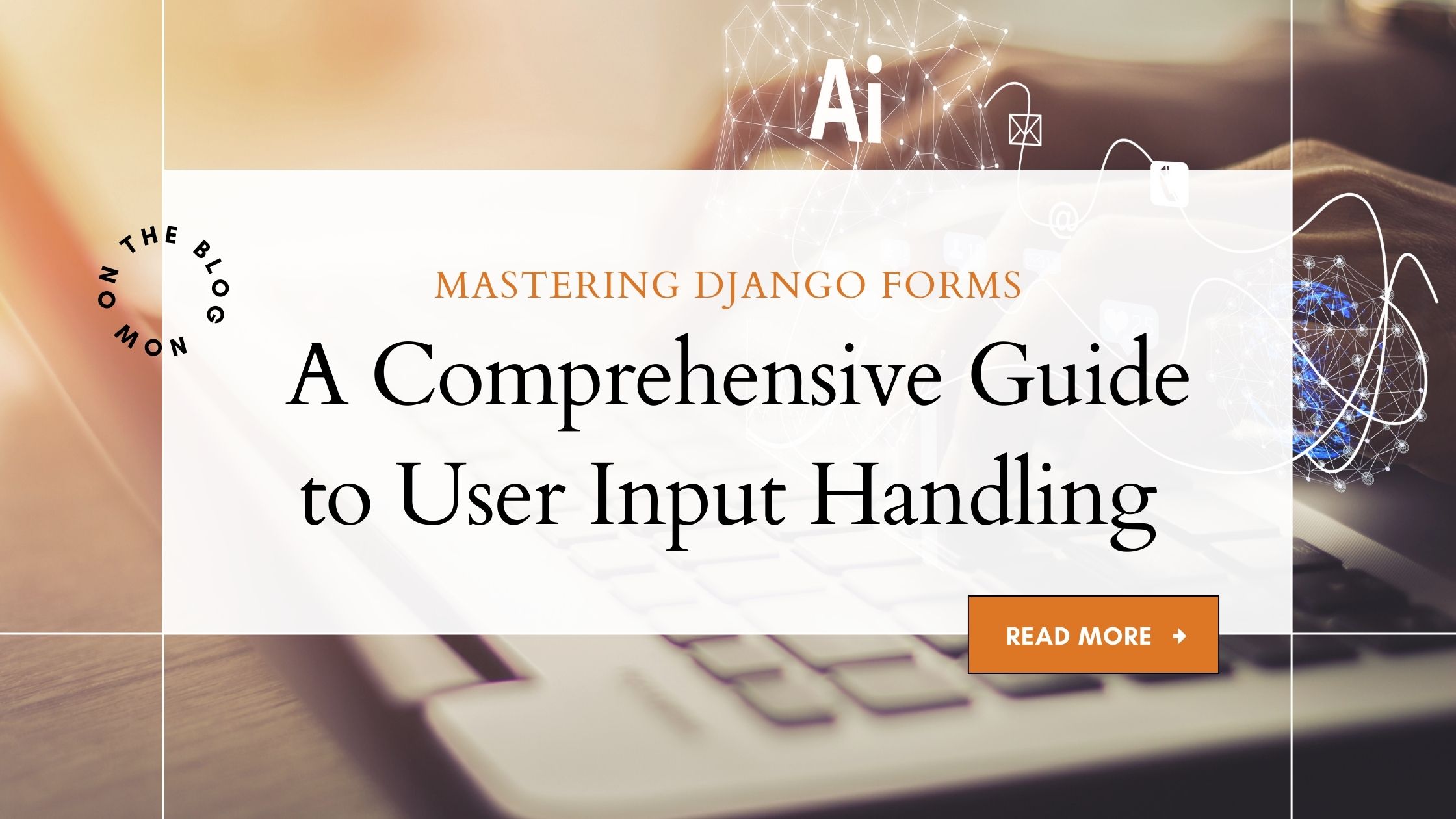Mastering Django Forms: A Comprehensive Guide to User Input Handling
In the realm of web development, handling user input is a critical aspect of building interactive and dynamic web applications. Django, a high-level Python web framework, offers a robust and versatile solution for managing user input through its form system. Django forms provide developers with a powerful toolset for creating, validating, and processing user-submitted data with ease and efficiency. In this comprehensive guide, we will delve deep into the intricacies of Django forms, exploring various techniques and best practices to master the art of user input handling in Django applications.
1. Understanding Django Forms
At the core of Django’s form system lies the concept of Django forms, Python classes that act as intermediaries between the user interface and the underlying data models. Django forms streamline the process of building dynamic web forms by encapsulating the logic for rendering HTML elements, processing user input, and performing data validation. By understanding the anatomy of Django forms, developers gain insight into how these essential components facilitate seamless interaction between users and web applications.
2. Creating Basic Forms
The journey of mastering Django forms begins with the creation of basic forms, laying the foundation for more complex interactions. In Django, forms are defined as Python classes that inherit from the forms.Form class. Each form class comprises a collection of form fields, each representing a specific type of user input. Through practical examples and code snippets, we delve into the process of defining form fields, configuring field attributes, and constructing basic forms tailored to the unique requirements of web applications.
3. Working with Form Fields
Django offers a rich assortment of form field classes, each designed to handle distinct types of user input with precision and flexibility. From simple text inputs to complex file uploads, Django’s form field arsenal equips developers with the tools to capture diverse data types effectively. Through in-depth exploration and hands-on experimentation, we unravel the intricacies of Django’s form field ecosystem, empowering developers to harness the full potential of these versatile components in their web projects.
4. Form Validation
Form validation stands as a crucial pillar in the realm of user input handling, ensuring the integrity and validity of data submitted by users. In Django, form validation is seamlessly integrated into the form processing pipeline, offering automated validation based on field types and constraints. Furthermore, Django empowers developers to implement custom validation logic, enabling tailored validation rules to suit specific use cases. Through comprehensive examples and real-world scenarios, we navigate the terrain of Django form validation, equipping developers with the knowledge and expertise to enforce data integrity effectively.
5. Customizing Form Behavior
Customization serves as a cornerstone in the realm of Django forms, empowering developers to tailor form behavior and appearance to align with the unique aesthetics and functionality of web applications. From refining field rendering to orchestrating intricate form layouts, Django provides a plethora of customization options to accommodate diverse design requirements. By delving into advanced customization techniques and best practices, we empower developers to wield Django forms as versatile instruments for crafting compelling user experiences.
6. Handling File Uploads
In the age of multimedia-rich web applications, the ability to handle file uploads emerges as a critical aspect of user input handling. Django’s built-in support for file uploads streamlines the process of capturing and processing diverse file types, ranging from images to documents. Through a detailed exploration of file upload handling in Django forms, we unravel the intricacies of file field configuration, validation, and storage, equipping developers with the expertise to seamlessly integrate file upload functionality into their web applications.
7. Integrating Forms with Models
ModelForms, a powerful feature in Django’s form arsenal, bridges the gap between forms and data models, offering a streamlined approach to form creation and data manipulation. By automatically generating form fields based on model fields, ModelForms simplify the process of creating, updating, and validating model instances through web forms. Through practical examples and best practices, we illuminate the path to seamless integration of forms with models, enabling developers to leverage the full potential of ModelForms in their Django projects.
8. Advanced Form Techniques
Beyond the realm of basic form creation lies a realm of advanced techniques and methodologies that empower developers to push the boundaries of form-based interactions. From dynamic form generation to formsets for handling multiple forms, Django offers a myriad of advanced form features to accommodate complex use cases. Through hands-on exploration and in-depth analysis, we unravel the intricacies of advanced form techniques, equipping developers with the knowledge and expertise to tackle sophisticated form-based challenges with confidence.
9. Security Considerations
In the ever-evolving landscape of web security, safeguarding user input stands as a paramount concern for developers. Django, with its robust security features and best practices, offers a fortified fortress against common web vulnerabilities. From CSRF protection to input sanitization, Django provides a comprehensive suite of security measures to mitigate risks and safeguard user data. Through an exhaustive examination of security considerations in Django forms, we empower developers to fortify their web applications against potential threats and vulnerabilities, ensuring a secure and resilient user input handling experience.
10. Best Practices and Tips
In the pursuit of mastery in Django forms, adherence to best practices and adoption of proven methodologies emerge as guiding beacons for developers. From code organization to documentation and testing, Django advocates a disciplined approach to form development, fostering scalability, maintainability, and reliability. By distilling best practices and offering practical insights, we empower developers to navigate the intricacies of Django forms with finesse, unlocking the full potential of Django’s form ecosystem in their web projects.
Conclusion
In the realm of web development, mastery of Django forms emerges as a cornerstone for crafting compelling and user-centric web applications. Through meticulous exploration and comprehensive analysis, this guide has unveiled the inner workings of Django forms, equipping developers with the knowledge, skills, and expertise to navigate the complexities of user input handling with confidence and precision. Armed with these insights, developers are poised to embark on a journey of innovation and creativity, harnessing the full potential of Django forms to create immersive and captivating web experiences.







